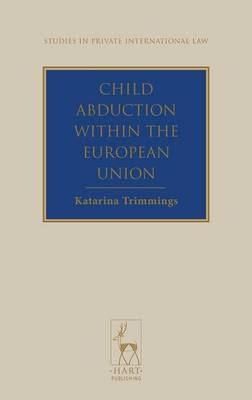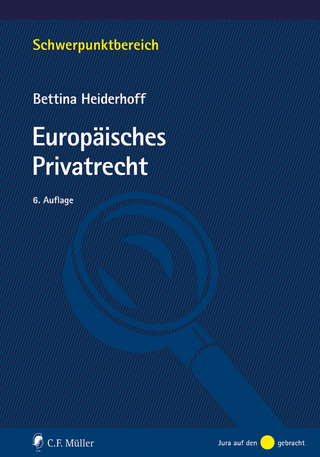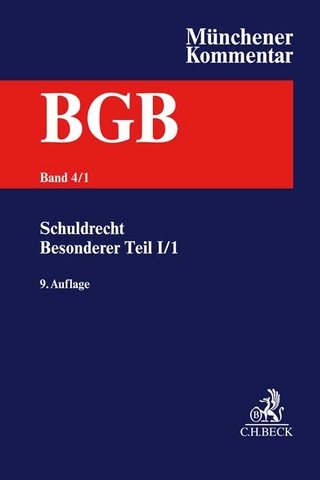
Child Abduction within the European Union
Hart Publishing (Verlag)
978-1-84946-397-3 (ISBN)
The first part of the book critically evaluates the evolution of the separate intra-EU child abduction regime and examines the extent to which the European Union complied with its standards of good legislative drafting during the negotiations on the Brussels II bis Regulation. It seeks to demonstrate that there was no real legal need for the involvement of the European Union in the area of child abduction and for the tightening of the 1980 Hague Abduction Convention return mechanism. The second part of the book presents findings of a statistical survey into the operation of child abduction provisions of the Brussels II bis Regulation in the first year of the functioning of the instrument and reveals how effectively the intra-EU return mechanism operated in that year. Based on the findings of the statistical survey, the book identifies and discusses a number of points of concern in respect of the functioning of the new child abduction scheme. Finally, the book investigates whether the Brussels II bis Regulation has added any value in the area of child abduction.
This title is included in Bloomsbury Professional's Family Law online service.
Katarina Trimmings is a Lecturer in Law at the University of Aberdeen.
1. Introduction
I. Structure and Methodology
2. Milestones on the Road to the Separate Child Abduction Regime within the European Union
I. October 1999: The Tampere European Council Meeting
II. May 2000: Council Regulation (EC) No 1347/2000 of 29 May 2000 on Jurisdiction and the Recognition and Enforcement of Judgments in Matrimonial Matters and in Matters of Parental Responsibility for Children of Both
Spouses (the Brussels II Regulation)
III. July 2000: Initiative of the French Republic with a View to Adopting a Council Regulation on the Mutual Enforcement of Judgments on Rights of Access to Children
IV. December 2000: The Draft Programme of Measures for Implementation of the Principle of Mutual Recognition
of Decisions in Civil and Commercial Matters
V. March 2001: Commission Working Document: Mutual Recognition of Decisions on Parental Responsibility
VI. September 2001: The Commission Proposal for a Council Regulation on Jurisdiction and the Recognition and
Enforcement of Judgments in Matters of Parental Responsibility
VII. October 2001–May 2002: Consultations on the Commission Proposal
VIII. May 2002: The Commission Proposal for a Council Regulation Concerning Jurisdiction and the Recognition and Enforcement of Judgments in Matrimonial Matters and in Matters of Parental Responsibility Repealing Regulation (EC) No 1347/2000 and Amending Regulation (EC) No 44/2001 in Matters Relating to Maintenance
IX. November 2002: Report of the European Parliament on the Revised Commission Proposal
X. November 2002–November 2003: Heated Negotiations
XI. The Brussels II bis Regulation
XII. Conclusions
3. Principles of Good Legislative Drafting vs Child Abduction Provisions of the Brussels II bis Regulation
I. The Principles of Subsidiarity and Proportionality
II. The Consultation Policy
4. The Argument of the Misuse of Article 13(1)(b): Myth or Reality?
I. The Statistical Analysis of Applications made in 1999 under the Hague Convention on the Civil Aspects of International Child Abduction
II. Special Commission Meetings to Review the Operation of the Hague Convention of 25 October 1980 on the Civil Aspects of International Child Abduction
III. Conferences and Judicial Seminars
IV. Academic Literature
5. Operation of the Brussels II bis Regulation: Empirical Study
I. Background to the Empirical Study
II. Scope, Aim and Methodology of the Empirical Study
III. Findings of the Empirical Study
IV. Conclusions of the Empirical Survey
6. Points of Concern
I. More Liberal Interpretation of the Key Concepts of the Convention in Order to Avoid Judicial Refusals Based on
Article 13
II. Protection of the Abductor Parent and the Child upon the Return
III. Timing
IV. Judicial and Administrative Qualities in the 'New' Member States of the European Union
7. Added Value of the Brussels II bis Regulation: A More Child-Centred Approach as a Result of the Obligation to Hear the Child Introduced by Article 11(2) of the Regulation
I. EU Jurisdictions: England and Wales, Scotland, Ireland and Northern Ireland
II. Current Approaches Toward the Defence of Child's Objections in Major Non-EU Jurisdictions: Australia, Canada and the United States: Post-2005 Case Law Analysis
8. Conclusions
| Erscheint lt. Verlag | 20.3.2013 |
|---|---|
| Reihe/Serie | Studies in Private International Law |
| Verlagsort | Oxford |
| Sprache | englisch |
| Maße | 156 x 234 mm |
| Gewicht | 576 g |
| Themenwelt | Recht / Steuern ► EU / Internationales Recht |
| Recht / Steuern ► Privatrecht / Bürgerliches Recht ► Internationales Privatrecht | |
| ISBN-10 | 1-84946-397-2 / 1849463972 |
| ISBN-13 | 978-1-84946-397-3 / 9781849463973 |
| Zustand | Neuware |
| Haben Sie eine Frage zum Produkt? |
aus dem Bereich


